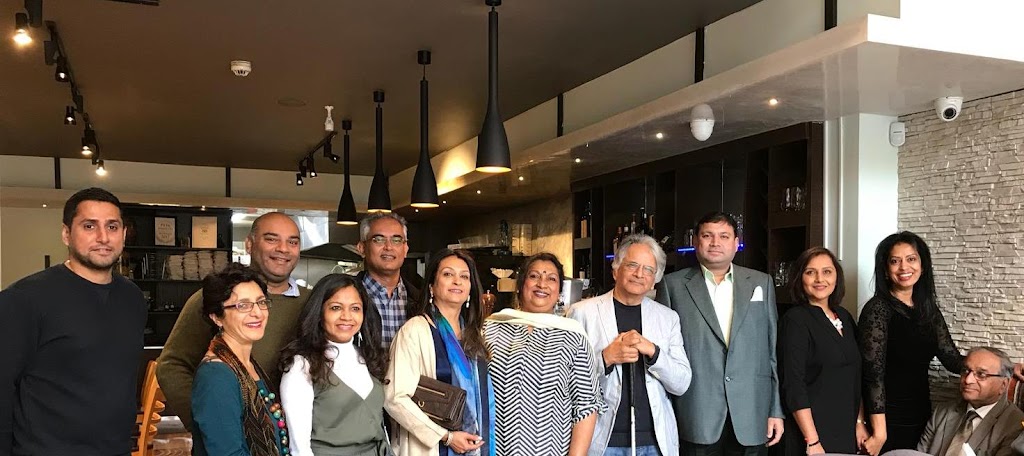India’s global cultural appeal moves up a notch

18 November, 2018: I recently visited the United Kingdom to formalize collaborations with various cultural organizations and Universities to promote art, cultural and literary bilateral events. I was amazed at the overwhelming response from the heads and representatives of various UK-based arts and cultural groups, Universities and non-resident Indians about India.
This phenomenon, which took off since Prime Minister Narendra Modi came to office, is evident everywhere overseas. Indeed, India’s global cultural appeal has moved up a notch. Never during my earlier visits did I see such a groundswell of interest among foreigners and foreign institutions about India and its culture.
The 1.6 million British Indians are the largest ethnic group in the United Kingdom and three Indian languages, Punjabi, Bengali and Gujarati are among the top seven spoken languages.
In the past few years, the India House in London and Missions in other foreign cities have done much to promote India’s soft power through Indian art, culture and literature. Many Universities which earlier used to club India under Asian or South Asian sections have now put in place a dedicated India section. Many cultural groups are keen to promote Indian culture and also Bollywood dance which is popular in many talent contests.
I had gone to the United Kingdom to promote our Hindi literary event Kalam, which has now spread to 24 cities across India. We have already made a start in London and it is my feeling, based on the kind of interest people are taking in Indian culture, that we would soon start our events in other cities of the world with local support.
I visited Birmingham, Edinburgh, Oxford, Nottingham and London. As far as the United Kingdom is concerned, the Indian Mission, Non-Resident Indians, Iskon, Art of Living, Vipassana centres, Bollywood culture and a host of Indian groups and clubs have made Indian culture, festivals, cuisine, dance, yoga, books and plays very popular.
The enthusiasm with which UN World Yoga Day is celebrated across cities of the world has added to all this.
Also, many rich Indians have extended their support and patronage to the various local outfits run by Indian diaspora. On the other hand, the Indian diaspora community is upbeat. They feel that India has earned a certain international fame and reputation among the comity of nations which was missing earlier.
Not to be left behind, the IT guys, the whiz kids and Indian curry, which is a national dish of UK, have all contributed to creating a typical Indian identity rooted in its ancient culture. Traditional Indian fashion icons like bindis, henna, sherwanis is now very much a part of the local culture thanks to the television soaps where bhangra and Bollywood vie with pop and jazz. The credit for all this goes to the British society’s spirit of promoting multiculturalism.
The Indian Society at the Trinity College in Dublin (Ireland) is one of the fastest growing. A few years ago only 30 to 40 students would turn up during Diwali festivities in the College. Last year there were more than 500 students trying to get into a jam-packed hall.
The British Council observed the 70th year of the Indo-British cultural exchange last year. Last year was an incredible year of cultural events and activities in India organized by the British Council and similar programmes were organized in the UK by the Government of India.
At the get-together, which was hosted by Sampad South Asian Arts & Heritage in Birmingham at Jaya Khazaei restaurant Del Villaggio, I met many people from the art fraternity and we discussed exploring unconventional ways to partner with arts organisations to promote Indian literature and culture in the region. At the get-together, I met Shruti Doshi. She is the Institute’s Co-ordinator at the University of Birmingham where there is a dedicated India Institute for raising awareness from academic research and scholarship to public engagement in culture. When I met Ms Preet Kaur Gill, Member of Parliament for Birmingham Edgbaston at the House of Commons, I sensed a new yearning for Indian culture. People, especially the NRIs, are turning towards the rich Indian culture and Indianness (Bhartiyata).
On my trip to Edinburgh, I had a very good meeting with Edinburgh Napier University and the University of Edinburgh officials. We discussed the possibilities of collaboration and exchange programs in arts and culture. They were very interested to host Indian artists and conduct workshops in the University and provide the students with an opportunity to learn about the various performing arts of India.
I was invited to attend the annual grand Hindi Kavi Sammelan in Nottingham where I met Jai Verma. She has been a strong advocate of Hindi language and literature and has been promoting Indian culture for over four decades now. Through her experience, contacts and knowledge, Jai has been championing the cause of Hindi in the UK and has also organised various literary functions and annual International Kavi Sammelans in Nottingham since 2003.
She was a supporting member of Nottingham’s bid to become a UNESCO City of Literature which was formally announced in December 2015. She is also campaigning for Kolkata to become a UNESCO City of Literature.
Overall, what I realized during my trip to the UK is that there is a growing eagerness among the Britishers as well as among the prominent Indians residing there to engage in events and activities related to India and know more about Indian culture.
The cultural capital base of India in the UK has certainly moved up a notch. As a visitor, I could feel a newfound interest, recognition and warmth in Bahar Bharat towards India’s cultural heritage which was earlier missing. The positive impact of all this is the flowering of a vibrant cultural scenario in which India is the fulcrum.
ess bee
